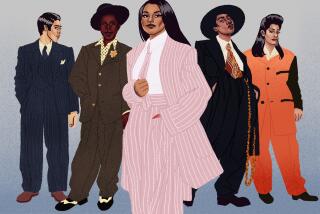Canada: Killer clothes from 19th century Europe at Toronto museum
- Share via
High European fashion in the 19th century could be stunning -- and a bit dangerous. “Fashion Victims,” an exhibition that opened last week at the Bata Shoe Museum in Toronto, displays shoes and clothing that had a decidedly dark side.
The museum exhibition explores “the dangers of dresses and shoes dyed arsenic green, the plight of mad hatters and mercury poisoning as well as the effects of constricting corsets and impossibly narrow footwear,” a statement says.
Indeed, it’s hard to think about the “impossibly narrow” shoes that belonged to style-setter Empress Elisabeth of Austria without your feet starting to ache. It’s beyond unsettling to realize the beautiful greens and mauves in other pairs of exquisitely made shoes were created with dyes that used toxic chemicals such as arsenic and picric acid.
There’s also a stylish fur top hat made at the end of the 19th century that retains small amounts of mercury. The museum says hat makers started treating fur with mercury as early as the 1730s, a process that led to “mad hatter disease” from inhaling the fumes.
The show includes some famous items too. A pair of black shoes that once belonged to Britain’s Queen Victoria is on display. The shoes are a reminder that she wore nothing but black after her beloved Prince Albert died in 1861.
How much harm did these garments bring to their wearers and makers? Hard to say, but it’s cause enough to reflect on the implications of our own modern-day “dangerous” fashions, such as athletic shoes and T-shirts made in Third World countries.
The exhibition will be on display through June 2016.
Info: “Fashion Victims: The Pleasures and Perils of Dress in the 19th Century”
More to Read
Sign up for The Wild
We’ll help you find the best places to hike, bike and run, as well as the perfect silent spots for meditation and yoga.
You may occasionally receive promotional content from the Los Angeles Times.







